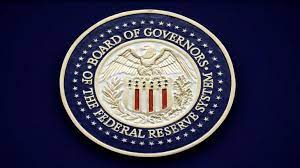
In its latest report, the US Federal Reserve said that household debt in the country increased at the fastest rate in 15 years during the third quarter, owing to significant increases in credit card usage and mortgage balances.
Total debt increased by $351 billion from July to September, the largest nominal quarterly increase since 2007, bringing the total household IOU in the United States to a new high of $16.5 trillion. This represents a 2.2% increase over the previous quarter and an 8.3% increase over a year ago.
The increase comes on the heels of a $310 billion increase in the second quarter and represents a $1.27 trillion annual increase.
Debt has risen in the last year as inflation has approached its 40-year high, interest rates have risen, and consumer demand has been strong.
Mortgage balances, which increased $1 trillion year on year to $11.7 trillion, and credit card debt, which increased to $930 billion, were the two largest contributors to that debt load.
According to the New York Fed, which released the report, credit card balances increased by more than 15% compared to the same period in 2021, the largest annual increase in more than 20 years. The rise "towers over the last eighteen years of data," according to a group of Fed researchers writing on the central bank's website.
“Credit card, mortgage, and auto loan balances continued to increase in the third quarter of 2022 reflecting a combination of robust consumer demand and higher prices,” said Donghoon Lee, economic research advisor at the New York Fed. “However, new mortgage originations have slowed to pre-pandemic levels amid rising interest rates.”
Credit card growth, according to New York Fed researchers, is due to "very robust" consumption, rising prices, and consumers using substantial amounts of savings that remain on accounts.
The rise in balances has coincided with an increase in delinquencies.
While "delinquency rates are rising," the researchers write, "they remain low by historical standards, indicating consumers are managing their finances during a period of rising prices."
In other news, the Fed reported that auto loan balances increased to $1.52 trillion, while student loan debt decreased to $1.57 trillion. Student loan debt has dropped to its lowest level since the second quarter of 2021, thanks to a long period of forbearance and the Biden administration's efforts to forgive some education loan debt.
Auto loan debt is up 5.6% year on year, despite only a slight increase on a quarterly basis.
Mortgage balances have continued to rise as interest rates have risen sharply, with 30-year mortgage loan rates hovering around 7%. Total debt increased despite a sharp drop in originations, which fell nearly 17% to $633 billion.
Even after a pandemic-related moratorium expired, foreclosures remained low. Delinquent student loan rates remained around 4%.
(Source:www.cnbc.com)
Total debt increased by $351 billion from July to September, the largest nominal quarterly increase since 2007, bringing the total household IOU in the United States to a new high of $16.5 trillion. This represents a 2.2% increase over the previous quarter and an 8.3% increase over a year ago.
The increase comes on the heels of a $310 billion increase in the second quarter and represents a $1.27 trillion annual increase.
Debt has risen in the last year as inflation has approached its 40-year high, interest rates have risen, and consumer demand has been strong.
Mortgage balances, which increased $1 trillion year on year to $11.7 trillion, and credit card debt, which increased to $930 billion, were the two largest contributors to that debt load.
According to the New York Fed, which released the report, credit card balances increased by more than 15% compared to the same period in 2021, the largest annual increase in more than 20 years. The rise "towers over the last eighteen years of data," according to a group of Fed researchers writing on the central bank's website.
“Credit card, mortgage, and auto loan balances continued to increase in the third quarter of 2022 reflecting a combination of robust consumer demand and higher prices,” said Donghoon Lee, economic research advisor at the New York Fed. “However, new mortgage originations have slowed to pre-pandemic levels amid rising interest rates.”
Credit card growth, according to New York Fed researchers, is due to "very robust" consumption, rising prices, and consumers using substantial amounts of savings that remain on accounts.
The rise in balances has coincided with an increase in delinquencies.
While "delinquency rates are rising," the researchers write, "they remain low by historical standards, indicating consumers are managing their finances during a period of rising prices."
In other news, the Fed reported that auto loan balances increased to $1.52 trillion, while student loan debt decreased to $1.57 trillion. Student loan debt has dropped to its lowest level since the second quarter of 2021, thanks to a long period of forbearance and the Biden administration's efforts to forgive some education loan debt.
Auto loan debt is up 5.6% year on year, despite only a slight increase on a quarterly basis.
Mortgage balances have continued to rise as interest rates have risen sharply, with 30-year mortgage loan rates hovering around 7%. Total debt increased despite a sharp drop in originations, which fell nearly 17% to $633 billion.
Even after a pandemic-related moratorium expired, foreclosures remained low. Delinquent student loan rates remained around 4%.
(Source:www.cnbc.com)














